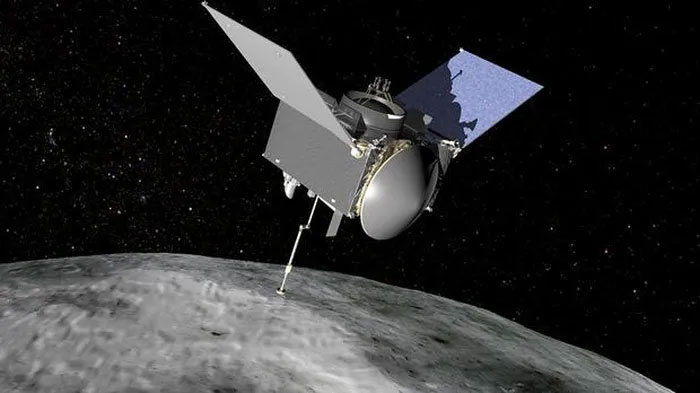NASA spacecraft collects 250g sample on asteroid Bennu
According to research published in the journal Science on July 7, the OSIRIS-REx spacecraft of the US National Aeronautics and Space Administration (NASA) arrived at the asteroid Bennu and obtained a sample weighing about 250 grams to carry. about Earth.

The Osiris-Rex spacecraft.
The OSIRIS-REx spacecraft approached Bennu in December 2018 and conducted surveys before landing on the planet's surface to collect rock samples in October 2020. The spacecraft has completed its first mission to collect samples from asteroids to bring back to Earth. Initially, NASA intended to take samples weighing at least 60g.
It is expected that the sample will be returned to Earth in September 2023. NASA planned to share part of this specimen with the Japanese space agency.
Asteroids are thought to be remnants of the formation of the solar system 4.6 billion years ago. Studying asteroids will provide new insights into the formation of the solar system and the origin of life.
Previously, Japan's Hayabusa2 spacecraft, which is smaller than OSIRIS-REx, brought back a sample weighing about 5.4g from the asteroid Ryugu and shared with NASA some of the material obtained after returning to Earth. in December 2020. This specimen includes more than 20 amino acids that are important to all organisms in the production of proteins. This discovery reinforced the theory that the origin of life on Earth came from outer space.
- Asteroid diameter of 500m spew rocks into space
- NASA spacecraft approaches the ancient Bennu planet
- Video: NASA ship borrowed Earth's force to soar to the asteroid
- NASA will launch the world's most massive
- Send name to asteroid
- NASA sends a spaceship to carry soil
- The mission to bring 4.5-year asteroid specimens back to Earth
- NASA launched a meteorite research satellite that could destroy the Earth
- Stunned to discover the secret Itokawa asteroid
- NASA is about to crash a $ 330 million spacecraft into an asteroid
- NASA spacecraft approached the meteorite that could collide with the Earth
- NASA announced the details of the plan to
 Van Allen's belt and evidence that the Apollo 11 mission to the Moon was myth
Van Allen's belt and evidence that the Apollo 11 mission to the Moon was myth The levels of civilization in the universe (Kardashev scale)
The levels of civilization in the universe (Kardashev scale) Today Mars, the sun and the Earth are aligned
Today Mars, the sun and the Earth are aligned The Amazon owner announced a secret plan to build a space base for thousands of people
The Amazon owner announced a secret plan to build a space base for thousands of people